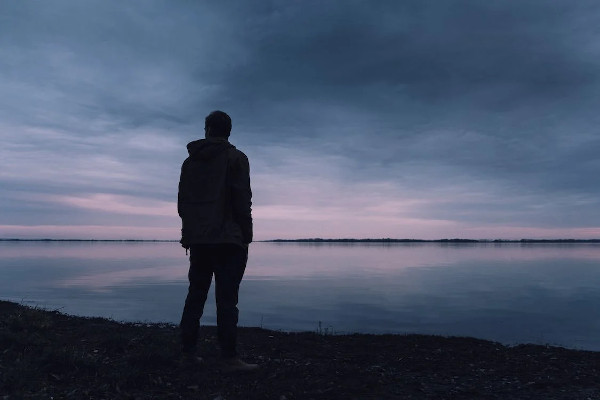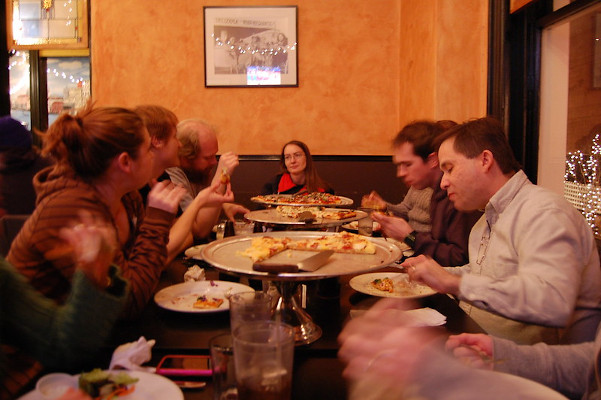Why Do So Many American Men (and Women) Lack Friends?

Opinion:
I guess I was rather surprised and maybe distressed for the health of U.S. society to read a recent column in the Washington Post that said 1 in 7 American men don’t have friends.
I’m lucky in that regard, because I do have a few male friends from work and past social gatherings I used to attend. But other than me, these said friends seem to have few or no other friends of their own.
I must confess that except for one guy I sometimes would have lunch with, I’m now delinquent in rarely seeing or talking to most of my friends.

All this can be explained, perhaps, by the fact we’re all elderly, retired gentlemen and for whatever reason, don’t get out as much as we used to since it’s easier to stay home and watch television, surf the internet, sit back and listen to music, read a book, engage in a hobby like learning to play the piano, spend time with children or grandchildren if you have any, and generally avoid socializing -- which may be due to just plain old inertia or depression.
One of my oldest friends, divorced and living alone, explained to me that one reason I don’t see my friends as much is because I’m married, which satisfies my social obligations. In this friend’s case, he says it’s easy for him to stay home by himself and become morose and perhaps even morbid to the extent that he feels compelled, even against his own conflicting desire, that he’d rather not be bothered to leave the house, even if it doesn’t involve being with somebody else.
Before I got married 20-some years ago, I used to have a female friend or two, but reflecting now, years later, I wonder if they were real friends or just using me for some other purpose. I cite one lady in particular who always wanted to get together, in my thinking, to help her land a job, which included that I write and rewrite her resume -- depending on where she was applying.

I admit I was initially attracted to this lady romantically and wanted to be more than friends, but it didn’t seem that my feelings were reciprocated. We actually never discussed what was going on between us, perhaps out of shyness or feeling uncomfortable about raising the subject. After a long time of constant rejections from employers, she finally got a job, and I then stopped hearing from her. And I never called her either because by then, I believed we had exhausted whatever friendship there was between us.
This brings me to the subject of whether American heterosexual men and women can be just friends, as played out in the 1989 movie, When Harry Met Sally. On that vein, there was a 2012 article in Scientific American, written by Adrian F. Ward, an assistant professor of marketing at the University of Texas, that said the results of a study suggested that men, relative to women, have a particularly hard time being “just friends” with a female. Males assumed that any romantic attraction they experienced with women was mutual, and were blind to the actual level of romantic interest felt by their female friends, Ward wrote.
As we all know, that belief appears to apply to American society in particular, since, for example, most European men and women have numerous platonic friends of the opposite sex.

Another of my male friends, a divorced writer living alone in another state far away, apparently lacks for companionship, since he’s regularly calling me to complain that he should get out more and meet new people, but doesn’t want to disturb his quiet, loner lifestyle if it involves having to make too much of an effort. He uses social media to communicate with a woman overseas who, for whatever reason, sends him sexually provocative pictures of herself drinking and carousing in England’s pubs and saying that they should get together sometime -- either in England or America, or somewhere else. This cat-and-mouse game has been going on, he reports, for 20 years, and from the looks of things, never the twain shall they meet.
The 2021 American Perspectives Survey reports that only 59 percent of Americans now say they have a best friend--compared to 77 percent in 1990. Since 1990, five times as many men report they have no close friends at all, while women also face a decline, but compared with men, only 10 percent of women reported having no close friends
My wife is in the latter group, saying that she has no close friends here in the United States, other than those she knows from her job, whom she doesn’t see socially on a regular basis. In her case, however, she came to this country as an immigrant in 1993 and does have close friends back home in her native country. But she often says she wishes she had a female friend to talk to here. Her only friends, she said half-jokingly, are on Facebook and perhaps even me -- although as her husband, maybe I don’t count as a friend.
One obvious reason for the decline in friendship, according to the survey, is the COVID-19 pandemic that restricted people to their homes. Two other trends that are strongly associated with increasing rates of self-reported social isolation and feelings of loneliness are: “Americans are marrying later than ever and that they are more geographically mobile than in the past,” tying into the fact that Americans are working longer hours and traveling more for work, “which keeps people from maintaining and developing friendships.”

Another study relevant to this discussion is the book, Bowling Alone by Robert Putnam, which says Americans are engaging in activities individually rather than communally, which has negative consequences for American life.
But on a more optimistic note, one of my favorite songs is “You’ve Got a Friend,” which croons that it’s good to have a friend “when you’re down and troubled….” Even though I’m fortunate to have an understanding wife providing me with love, it’s still comforting to know that, unlike so many other unfortunate people in the U.S., I do have some genuine friends in this world.
Author Bio:
Eric Green, a Highbrow Magazine contributor, is a former newspaper reporter, U.S. congressional press aide, English as a second language teacher, and now a freelance writer in the Washington D.C. area. His articles have appeared in various newspapers and websites, including the Washington Post and Baltimore Sun.
For Highbrow Magazine
Image Sources:
--Pavel Danilyuk (Pexels, Creative Commons)
--Surprising Shots (Pixabay, Creative Commons)
--Lukas Rychvalsky (Pexels, Creative Commons)
--Casey Fleser (Flickr, Creative Commons)
--Jeshoots (Pexels, Creative Commons)































































































































































































































































































































